It can be quite annoying for your family when you spend a lot of time photographing wildlife during a family vacation.
This was the case on my recent family trip to Langkawi, Malaysia. Langkawi, with its lush rainforests, boasts unique flora and fauna.
The wildlife photographer in me couldn’t resist the opportunity.
Eyebrows were raised as I packed my heavy-duty camera, and the question arose, “𝐖𝐡𝐲 𝐝𝐨 𝐰𝐞 𝐧𝐞𝐞𝐝 𝐭𝐡𝐢𝐬 𝐟𝐨𝐫 𝐭𝐡𝐞 𝐭𝐫𝐢𝐩?“
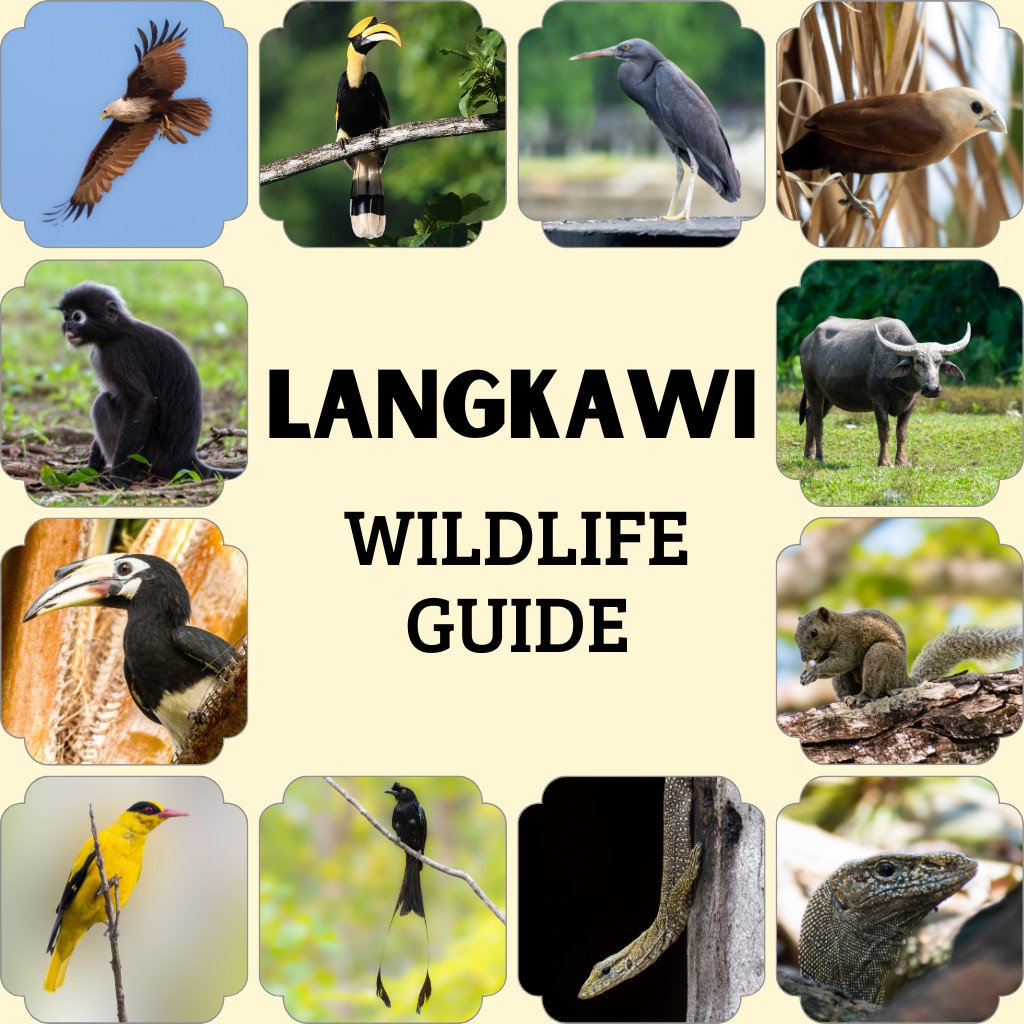
I was grateful to have my camera in Langkawi, and my family was equally delighted with the photos we captured. If you’re keen on experiencing Malaysia‘s remarkable wildlife outside of Borneo, Langkawi is the place to be. Even if you’re here for a family vacation or relaxing on the beach, keep your eyes peeled while traveling around the island; you’re likely to encounter a variety of animals and birds. During my week-long stay, I didn’t visit wildlife parks in Langkawi but still managed to capture incredible wildlife moments right along the roads of Langkawi.
While many visitors opt for mangrove boat tours to explore the Kilim Geoforest Park and its mangrove forests, these tours often emphasize attractions like monkey and eagle feeding, which draw large crowds. However, I believe in appreciating the pristine beauty of the mangroves without disrupting wildlife purely for tourist entertainment.
For those interested in observing Langkawi’s wildlife in their natural habitats, this guide provides essential insights. I’ll share details about various species and offer tips on where and how to spot them in the wild. As a wildlife conservationist and photographer, I advocate for observing animals and birds in their natural settings rather than in captivity for tourist purposes.
Primates of Langkawi
Langkawi’s rainforests host a rich diversity of primates due to the island’s lush, tropical environment and abundant food sources. The dense foliage and varied terrain provide ideal habitats for different species to thrive. Primates play a crucial role in maintaining the health of the ecosystem by aiding in seed dispersal and promoting plant growth. In general, their diet includes a mix of fruits, leaves and vertebrates, which helps regulate the population of various species and maintain ecological balance. Their presence also contributes to the biodiversity that makes Langkawi’s rainforests unique.
I am from India, which is home to a humongous population of wildlife in thousands of varieties. I have been to many forests and have seen primates up close. But believe me, the primates you see in Langkawi are very different. I was fascinated by their presence and was lucky to get some good clicks.
Long-tailed Macaque
The Long-tailed Macaque, also known as the crab-eating macaque, is a common sight in Langkawi, although they don’t actually consume crabs. Their diet consists of vertebrates and plants. These primates are ubiquitous on the island and are often seen raiding tourists’ belongings, a behavior change driven by constant feeding from humans. Sandy Skull Beach, one of the best beaches in Langkawi, has plenty of them, making them easy to spot leisurely. Typically found in flocks of 5-15, they can sometimes be very aggressive. You can also see them hanging from poles and cables all over Langkawi.
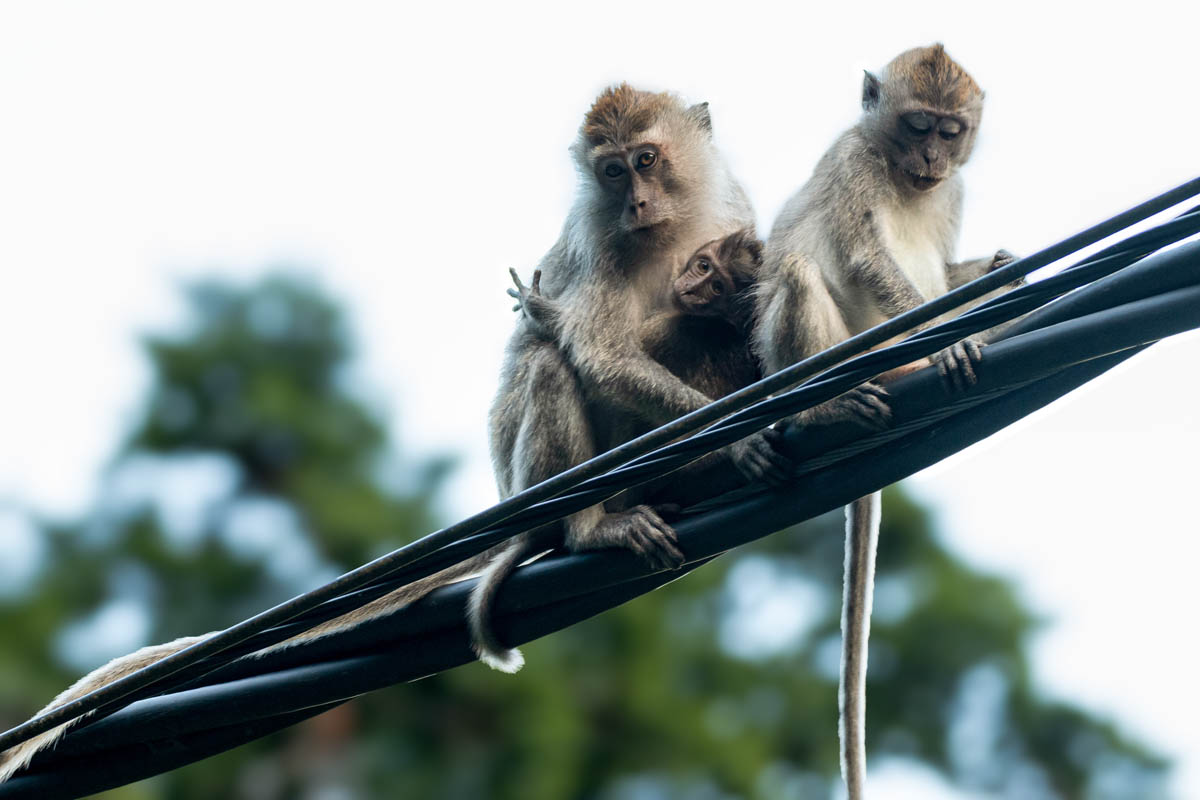
Dusky Leaf Langur
The Dusky Leaf Langur, also known as the Spectacled Langur, is a captivating primate with dark gray fur, large ringed eyes, and furry crowns that draw attention. The distinctive white rings around their eyes create the appearance of spectacles and a perpetually startled expression. They breed orange babies, making them less visible to color-blind predators.
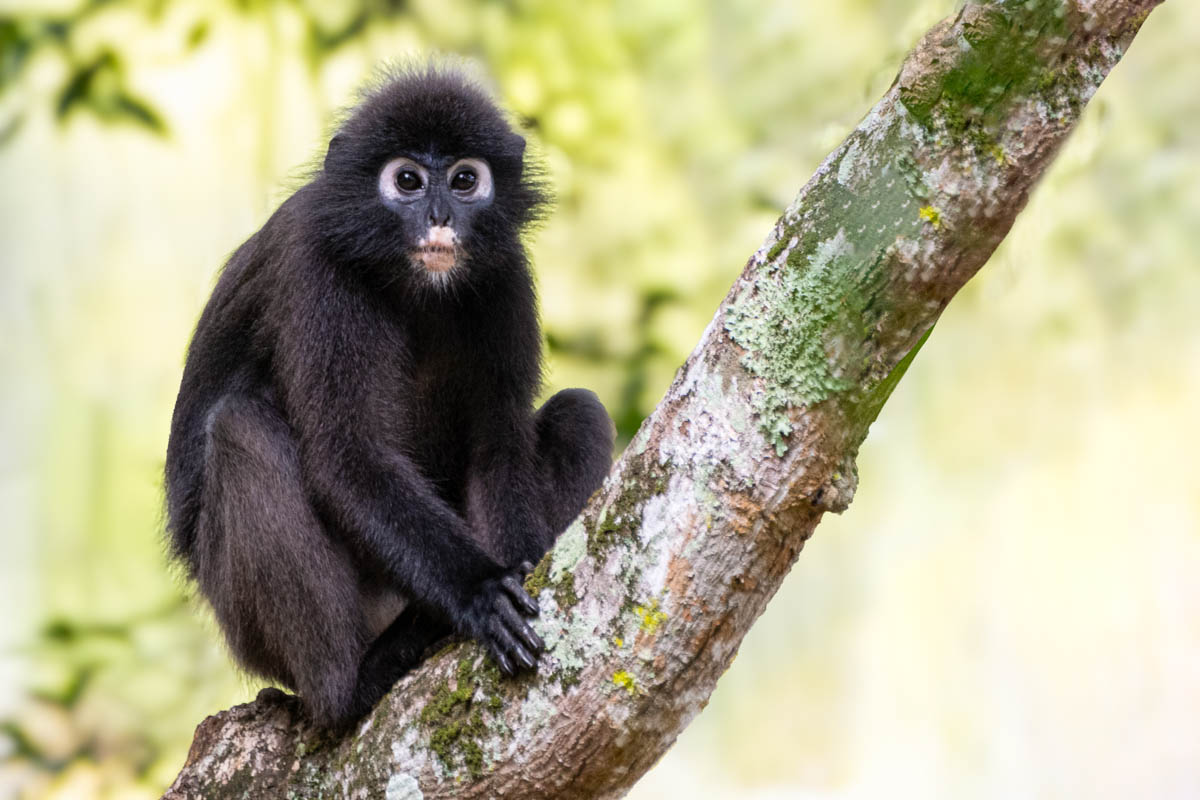
These langurs are mostly active during the day and live high up in the trees, although you might occasionally find them on the ground feeding on tender leaf shoots. I was fortunate to spot about 40 of them on the ground in Legend Park, Kuah, early one morning. Typically very shy, they scurry away as soon as you approach them. However, if you take a scenic early morning drive to Gunung Raya or visit the picturesque Pulau Tuba island, you are almost certain to see them in their natural habitat.
Flying Lemur
The Flying Lemur, also known as Colugo, is a fascinating creature that neither flies nor is a true lemur. Instead, it glides gracefully as it leaps among trees. These nocturnal primates feed on fruits and flowers and live either solitarily or in small groups. While they are skillful climbers, they are quite helpless on the ground. Spotting a Colugo is particularly challenging – I tried without success. However, taking an afterdark Langkawi rainforest tour might increase your chances of seeing these elusive gliders.
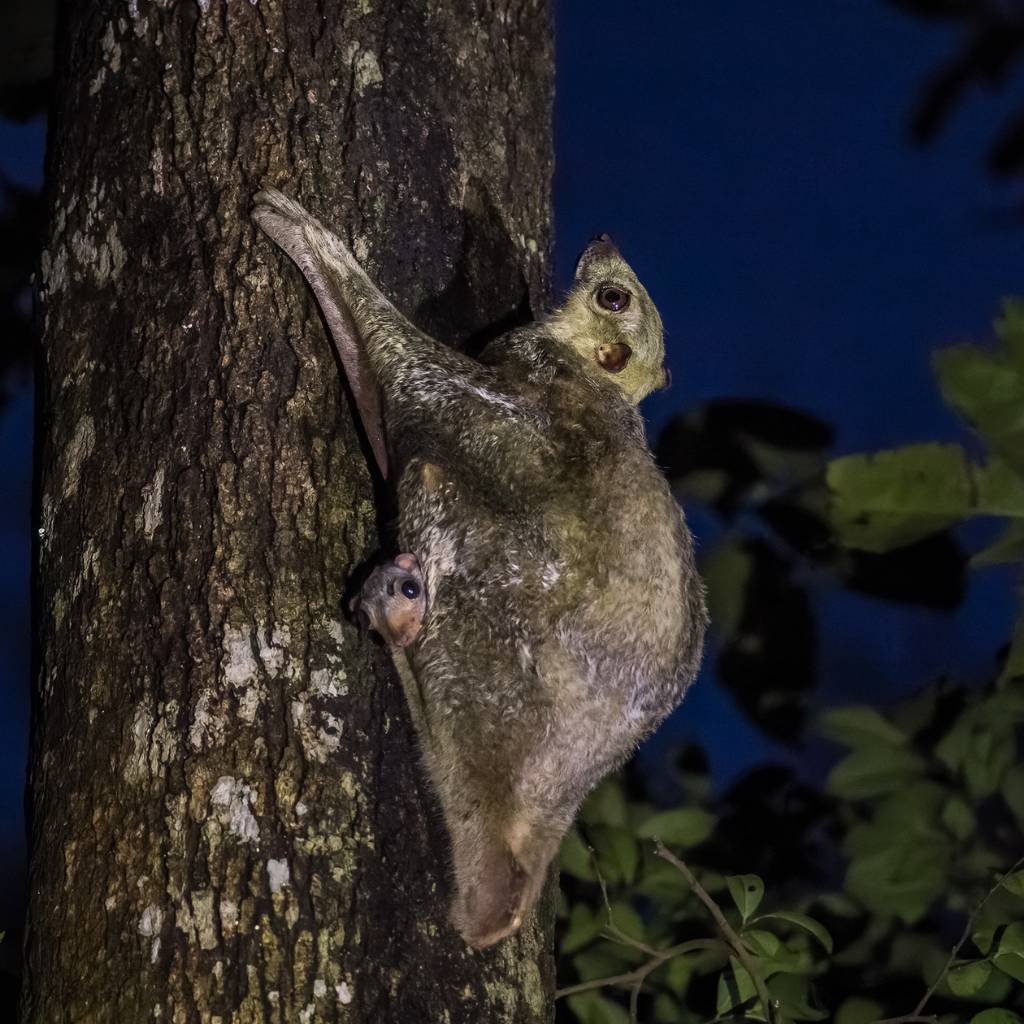
Slow Loris
The Slow Loris is a nocturnal primate with large eyes, adapted for night vision. Its arms and legs are of equal length, giving it a pincer-like grip that aids in climbing. The long, flexible trunk allows the Slow Loris to twist and extend to nearby branches effortlessly. It moves slowly and deliberately, making little to no noise, and when threatened, it becomes motionless to avoid detection by predators. Like the Flying Lemur, the Slow Loris is incredibly difficult to spot.
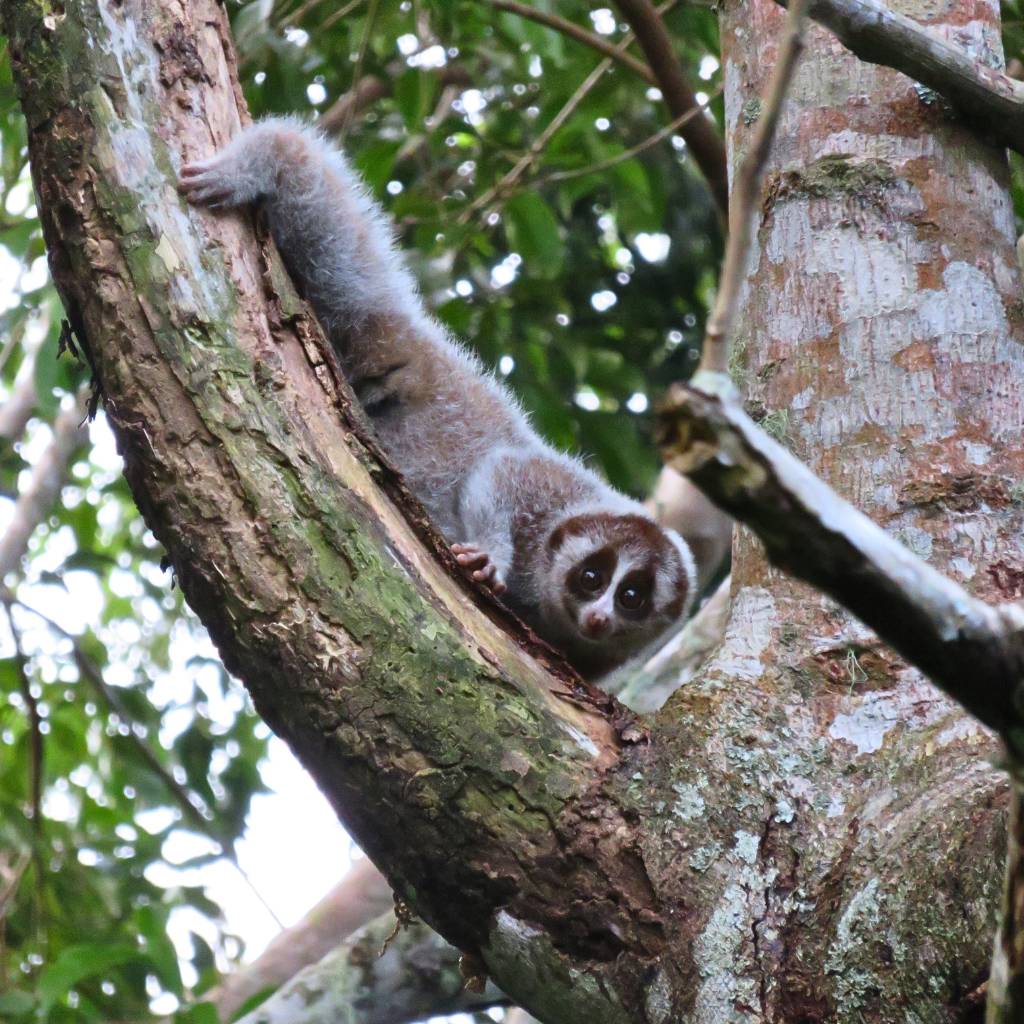
Hornbills of Langkawi
Langkawi is home to nine species of hornbills, making it a remarkable destination for bird enthusiasts. Out of the ten species found in Malaysia, the Oriental Pied, Great, and Wreathed hornbills are unique to Langkawi. These majestic birds are indeed a sight to behold, especially when seen flying with their distinctive silhouettes against the sky.
Great Hornbill
The Great Hornbill in Langkawi is an awe-inspiring sight, characterized by its striking size and vivid plumage with yellow and black casque. This impressive bird can often be seen soaring gracefully through the island’s lush rainforests, making it a favorite among bird watchers. Known for its loud calls and powerful flight, the Great Hornbill plays a crucial role in the ecosystem by dispersing seeds and maintaining forest diversity. Hornbills typically nest in tall trees, and the rainforests of Langkawi offer an ideal habitat for them. To spot Great Hornbills in Langkawi, Gunung Raya and Pulau Tuba are the best locations. They are most active early in the morning. However, in Pulau Tuba, you can also easily see them around midday.
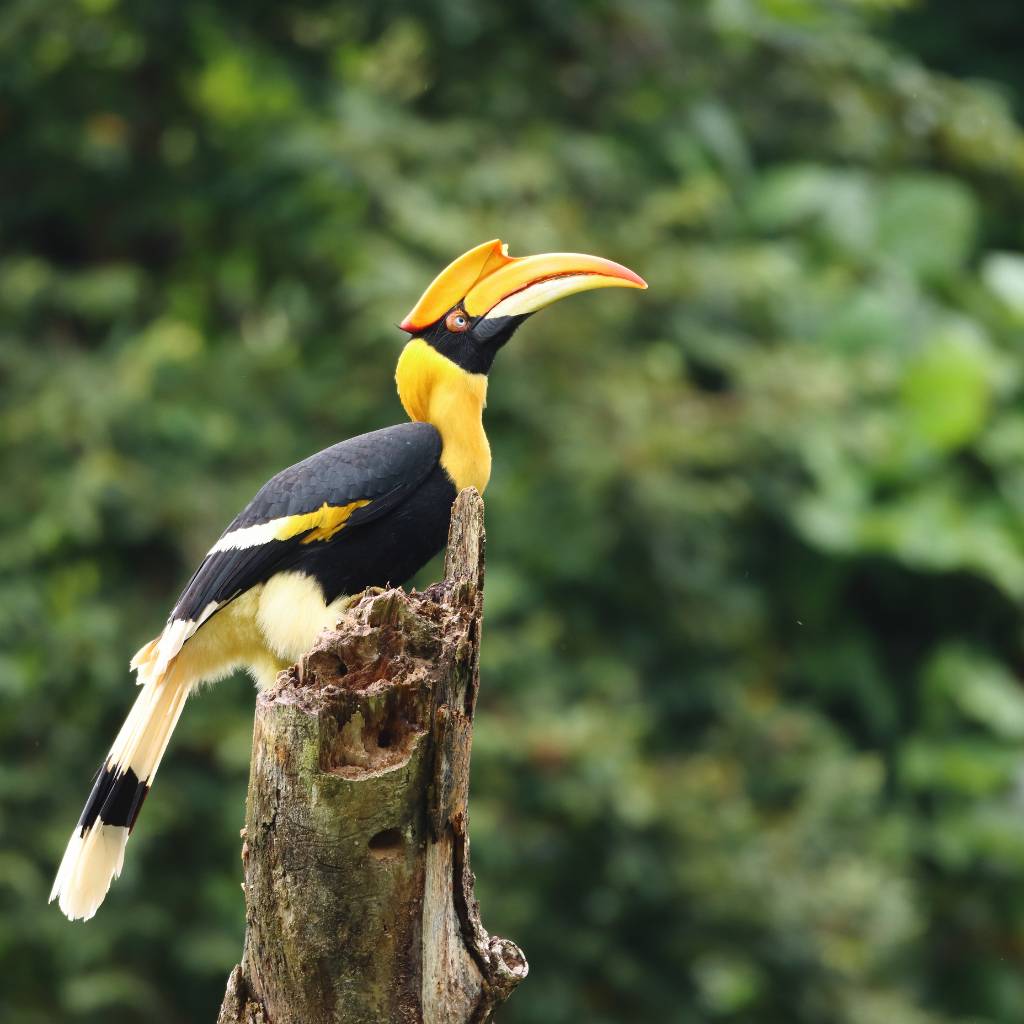
Oriental Pied Hornbill
The Oriental Pied Hornbill is a striking bird commonly found in Langkawi, easily recognizable by its distinctive black and white plumage and large, curved bill. This species is known for its adaptability, often seen in both dense forests and near human settlements. Its diet includes a variety of fruits and insects. The Oriental Pied Hornbill’s playful behavior and loud calls make it a delightful sight for birdwatchers. At first, I was a bit confused by their resemblance to the Malabar Pied Hornbill found in Valparai, India. For the best chance to see them in larger numbers, head to Legend Park in Kuah, especially in the early morning hours.
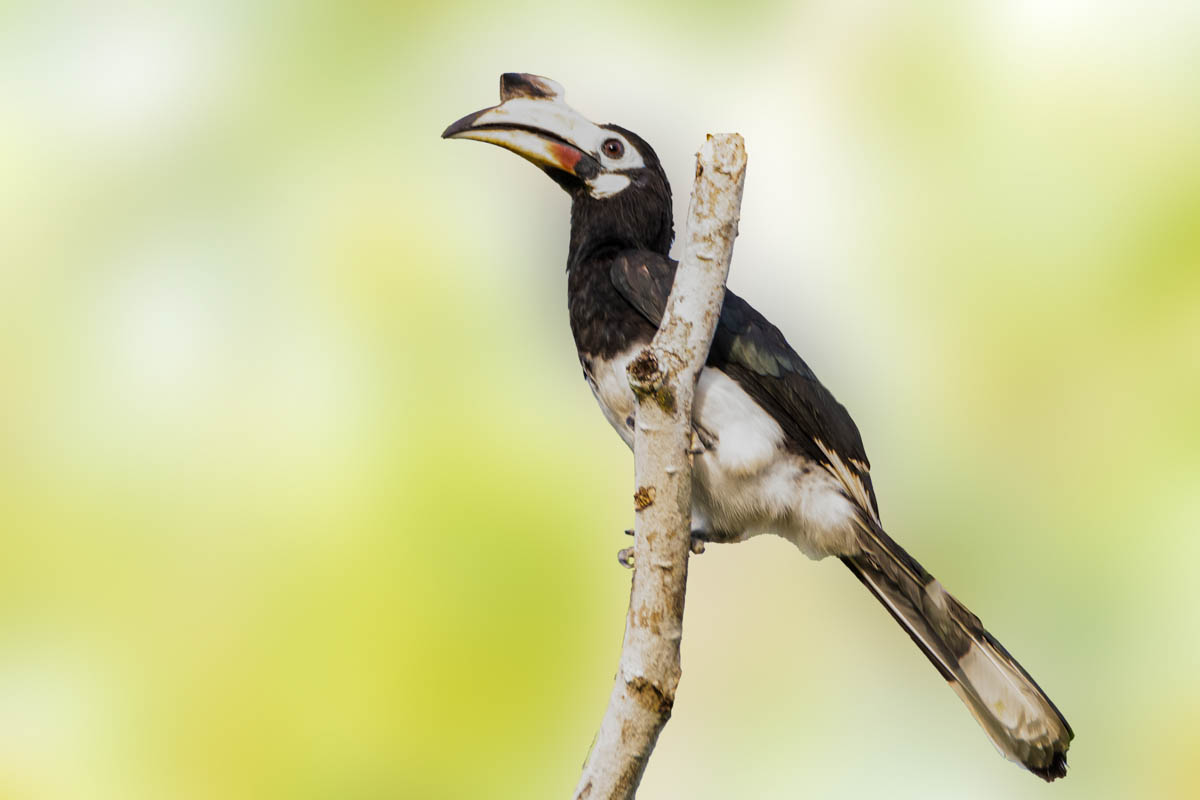
Reptiles of Langkawi
The rainforests of Langkawi harbor a diverse array of reptiles, including over 40 species of lizards and geckos. Among them, the Roti Canai Rock Gecko stands out, named after a popular food in Langkawi and Malaysia. These reptiles play crucial roles in the ecosystem, contributing to insect control and biodiversity.
Clouded Monitor Lizard
The Clouded Monitor Lizard is a formidable reptile found in the forests of Langkawi. Known for its distinctive pattern of cloud-like markings on its skin, it can grow to impressive sizes, often exceeding two meters in length. These lizards are agile climbers and swimmers, capable of navigating diverse habitats with ease. While primarily carnivorous, feeding on small animals and birds, they also scavenge for eggs and carrion. You can leisurely observe the Clouded Monitor Lizard at Legend Park in Kuah, though they are commonly found throughout Langkawi.
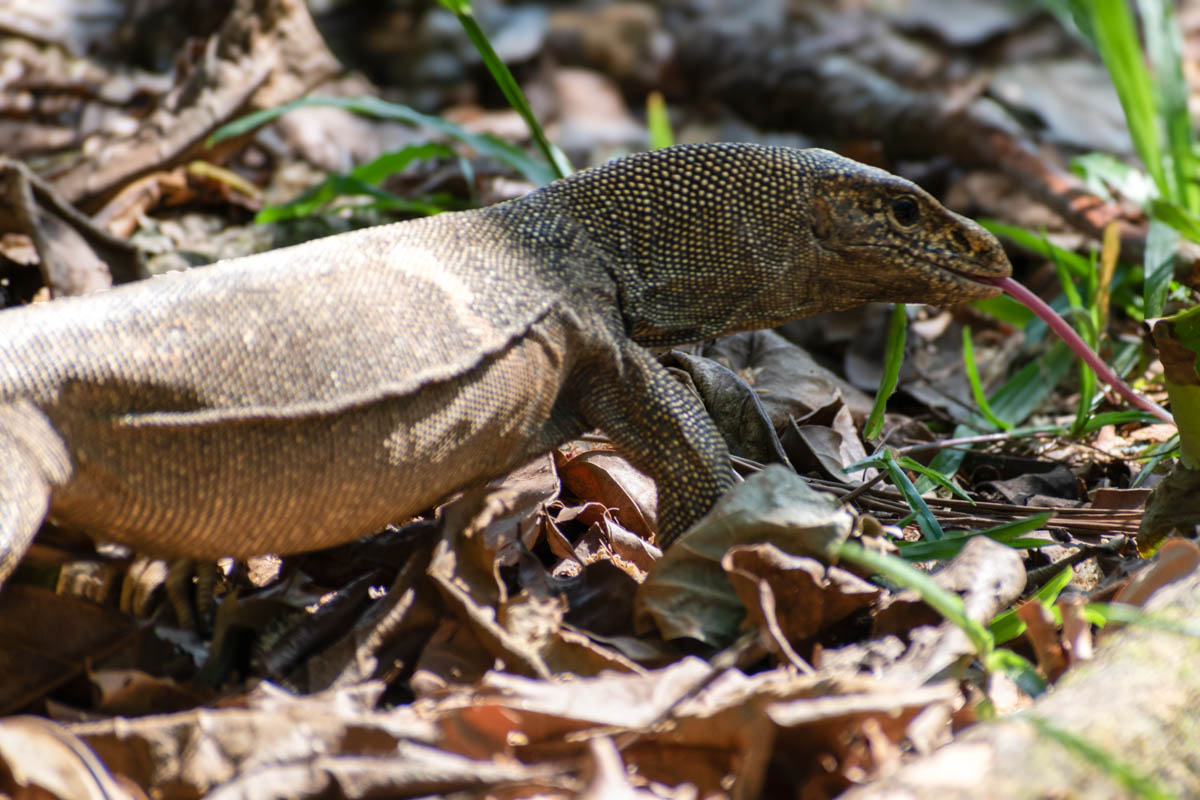
Common Butterfly Lizard
The Common Butterfly Lizard, native to Langkawi, is known for its striking appearance and unique behavior. Sporting vibrant colors and patterns reminiscent of butterflies, it blends seamlessly into its forest surroundings. These lizards are predominantly arboreal, often seen basking on tree trunks or foliage. They are agile climbers and swift runners, adept at escaping predators and catching insects for food. You can leisurely observe the Common Butterfly Lizard at Legend Park in Kuah.
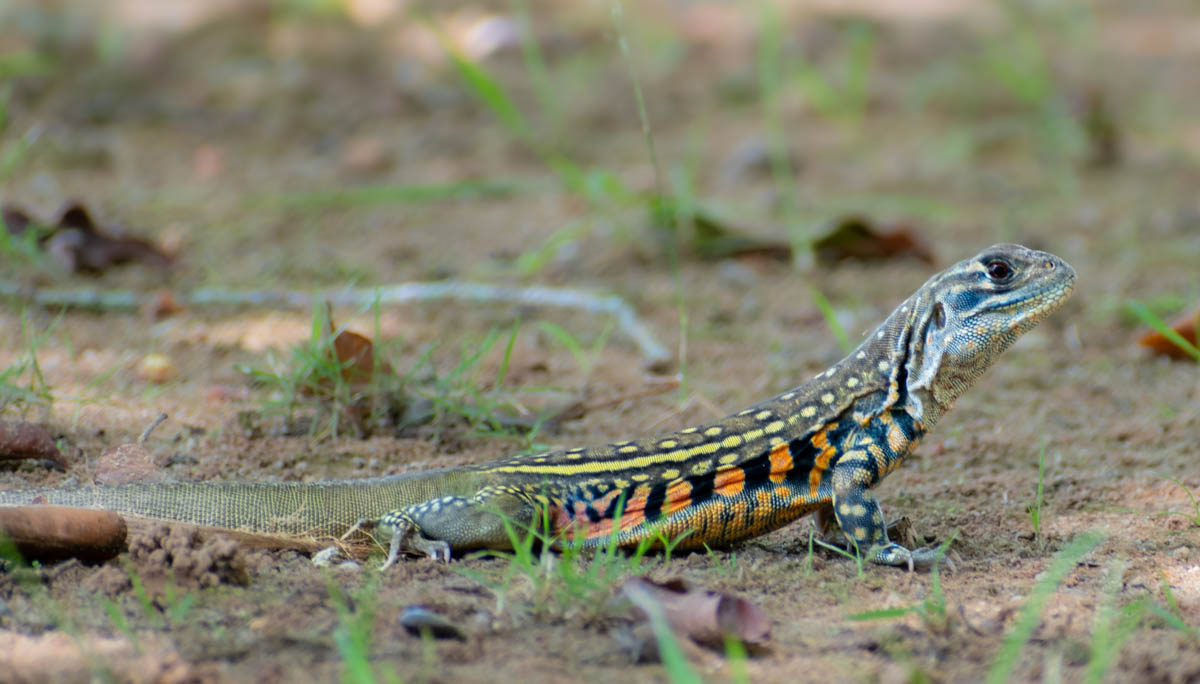
Squirrels of Langkawi
Langkawi is home to a variety of squirrel species. These agile rodents are commonly spotted foraging among the trees and foliage. Their quick movements and keen senses help them navigate the dense vegetation and evade predators. Squirrels play an important ecological role by dispersing seeds and contributing to forest regeneration.
Black Giant Squirrel
The Black Giant Squirrel, a striking species in Langkawi, stands out with its glossy black fur and contrasting white underparts. Often spotted in the island’s forests and parks, it showcases impressive agility as it navigates through treetops in search of fruits and nuts. This squirrel resembles the Malabar Giant Squirrel found in the forests of South India, particularly in the Kabini Tiger Reserve, albeit with different plumage.
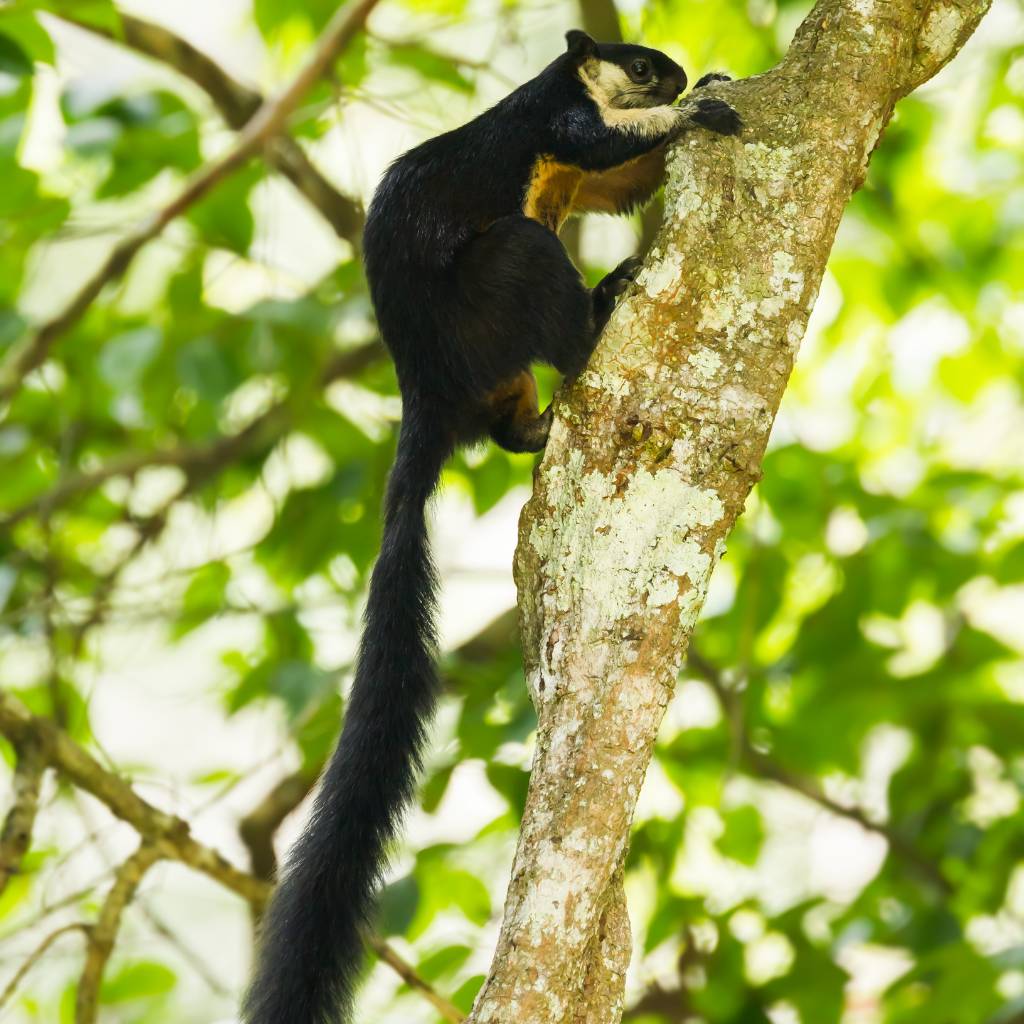
Grey-bellied Squirrel
The Grey-bellied Squirrel, characterized by its greyish-brown fur and lighter underside, is a ubiquitous sight throughout Langkawi’s varied habitats. These agile climbers are frequently spotted darting among the trees, foraging for seeds and fruits. Their adaptability to urban and forested environments makes them a common presence across the island.
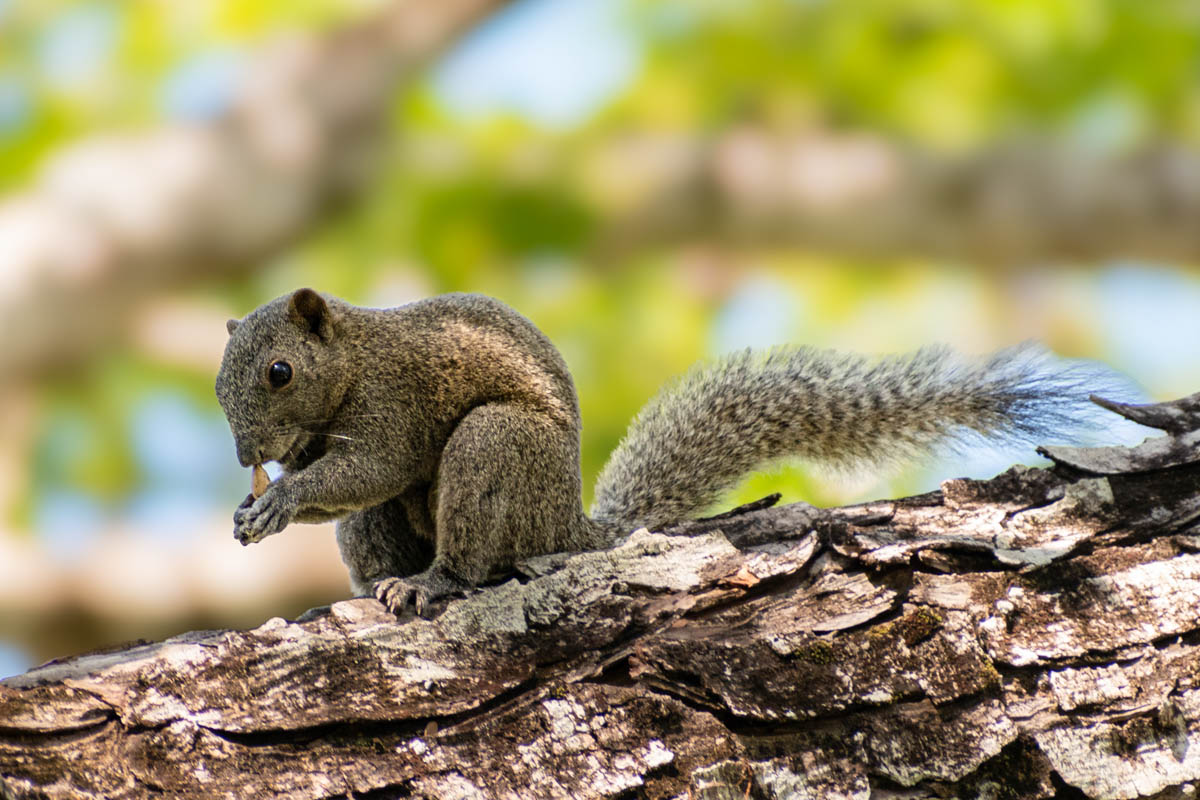
Raptors of Langkawi
Raptors are prominent predators in Langkawi’s skies, known for their keen eyesight and powerful talons. These birds of prey play a vital role in maintaining ecological balance by controlling populations of rodents and reptiles. With their soaring flight and sharp beaks, they are adept hunters, capable of spotting and catching prey from great heights. Raptors are often seen gliding gracefully over the island’s forests and coastlines.
Brahminy Kite
The Brahminy Kite, considered the symbol of Langkawi, is a majestic bird of prey widely distributed across the island. Its striking appearance includes a white head, neck, and breast adorned with distinctive black feather shafts. These kites are frequently spotted soaring above coastal areas, mangroves, and even urban settings, where they hunt for fish and other small prey. If you look up, you will most likely see a Brahminy kite three times out of five.
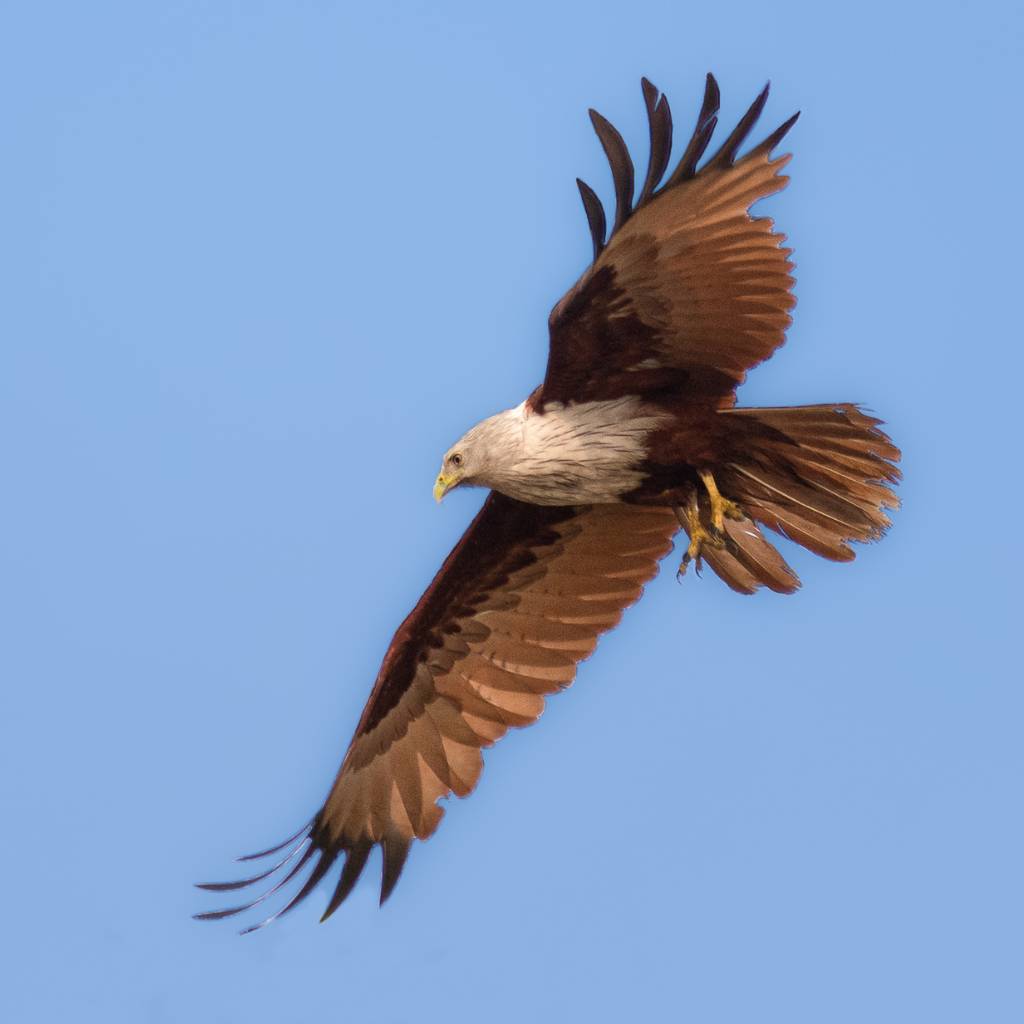
White-bellied Sea-eagle
The White-bellied Sea-eagle, a magnificent bird of prey in Langkawi, boasts an impressive wingspan of up to two meters. Its distinctive feature includes a loud honking call that can carry for up to one kilometer, often echoing across the island’s coastal waters. These eagles are skilled hunters, adept at catching fish and occasionally scavenging for food along the shoreline. There is a good chance of spotting them on the northern tip of Langkawi, around Tanjung Rhu.
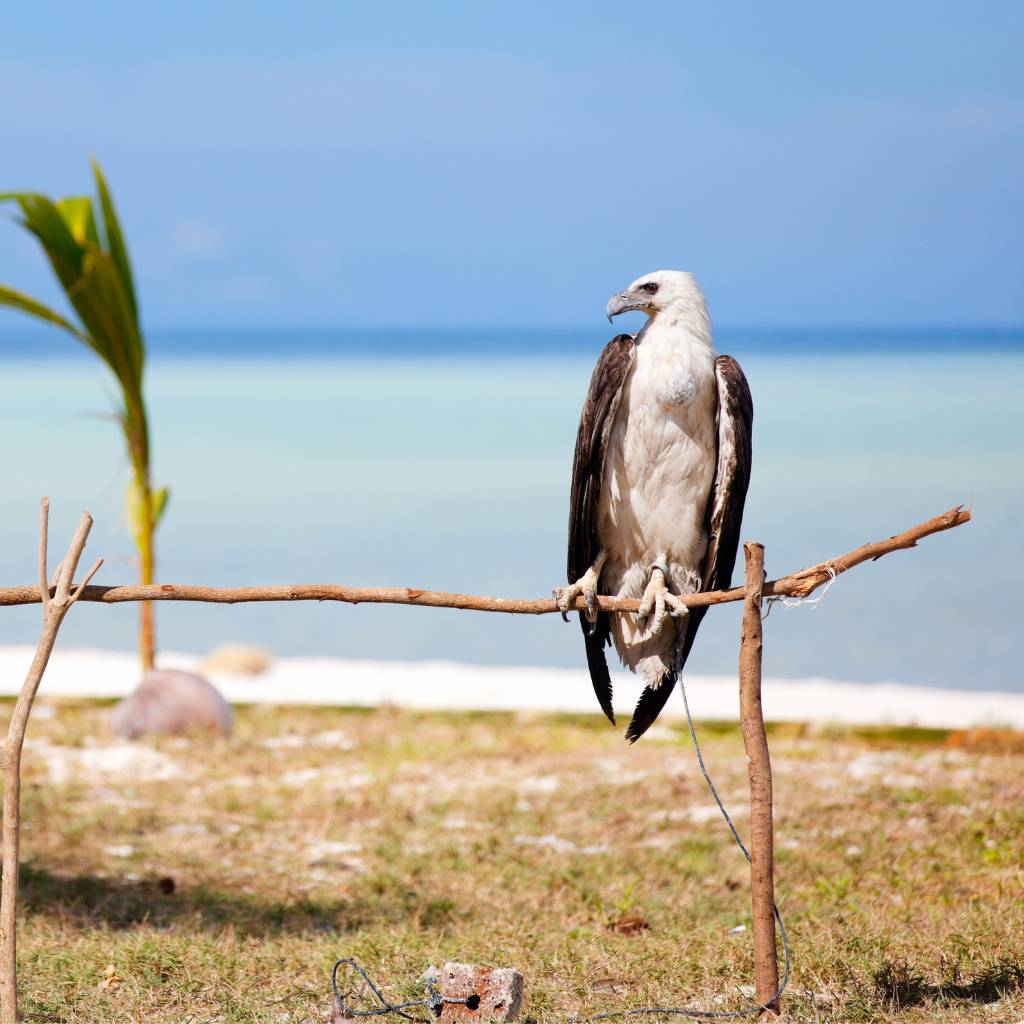
Crested Serpent-eagle
The Crested Serpent-eagle, a notable resident of Langkawi, is recognized by its distinctive bare yellow face and powerful build. These eagles are often observed perched high on tall trees or poles, scanning the surroundings for their preferred prey: snakes. With keen eyesight and agile flight, they swiftly capture and consume their serpentine meals. There is a good chance of spotting them on the way to Gunung Raya.
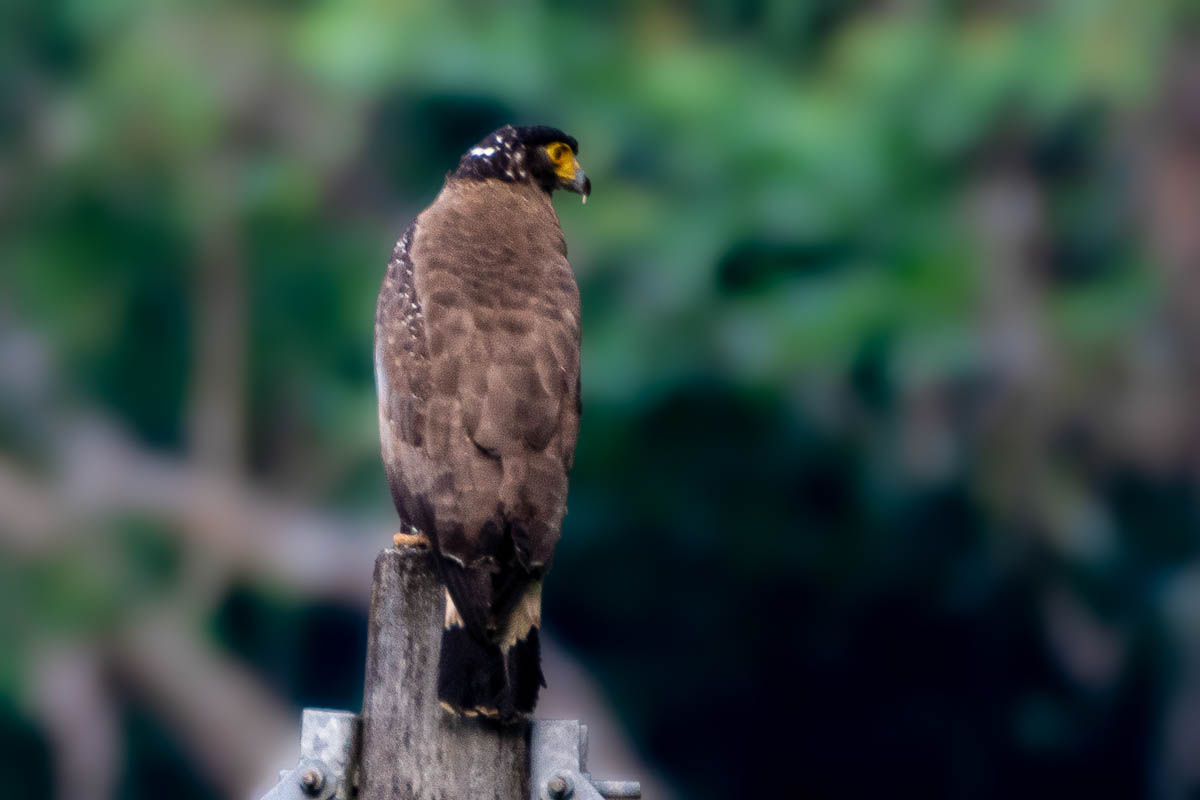
Birds of Langkawi
Langkawi hosts a rich diversity of bird species, with approximately 230 resident and migratory birds recorded on the island. These avian inhabitants range from colorful songbirds to majestic raptors and waterfowl, reflecting Langkawi’s varied habitats from lush rainforests to coastal mangroves. The island’s strategic location along migratory routes ensures a steady influx of bird species throughout the year.
Greater Racket-tailed Drongo
The Greater Racket-tailed Drongo is known for its distinctive elongated tail feathers adorned with rackets. These intelligent and vocal birds are often spotted in the island’s forests and gardens, where they mimic other bird calls and perform acrobatic displays.
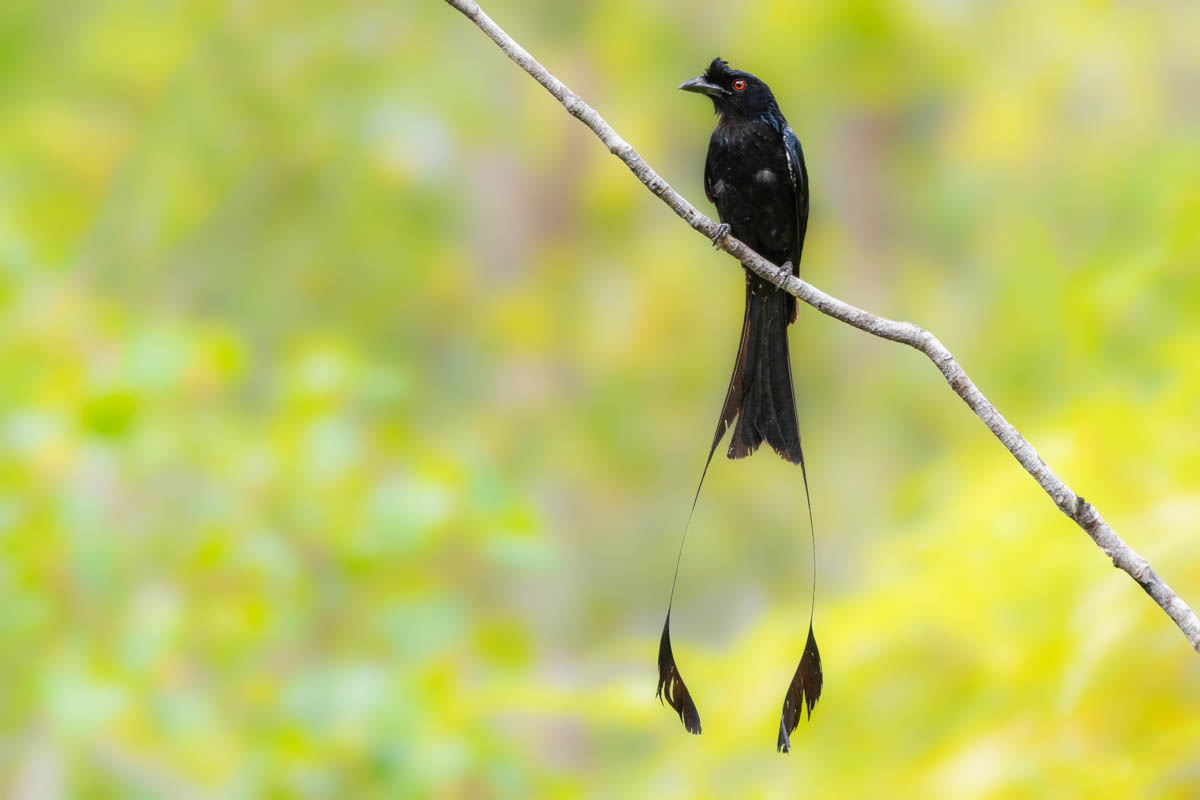
Pacific Swallow
The Pacific Swallow is a graceful bird commonly found in Langkawi, recognized by its distinctive blue-black plumage and deeply forked tail. These agile swallows are adept flyers, often seen darting gracefully over open areas and water bodies, catching insects mid-air. They nest in colonies under bridges, buildings, or cliff overhangs.
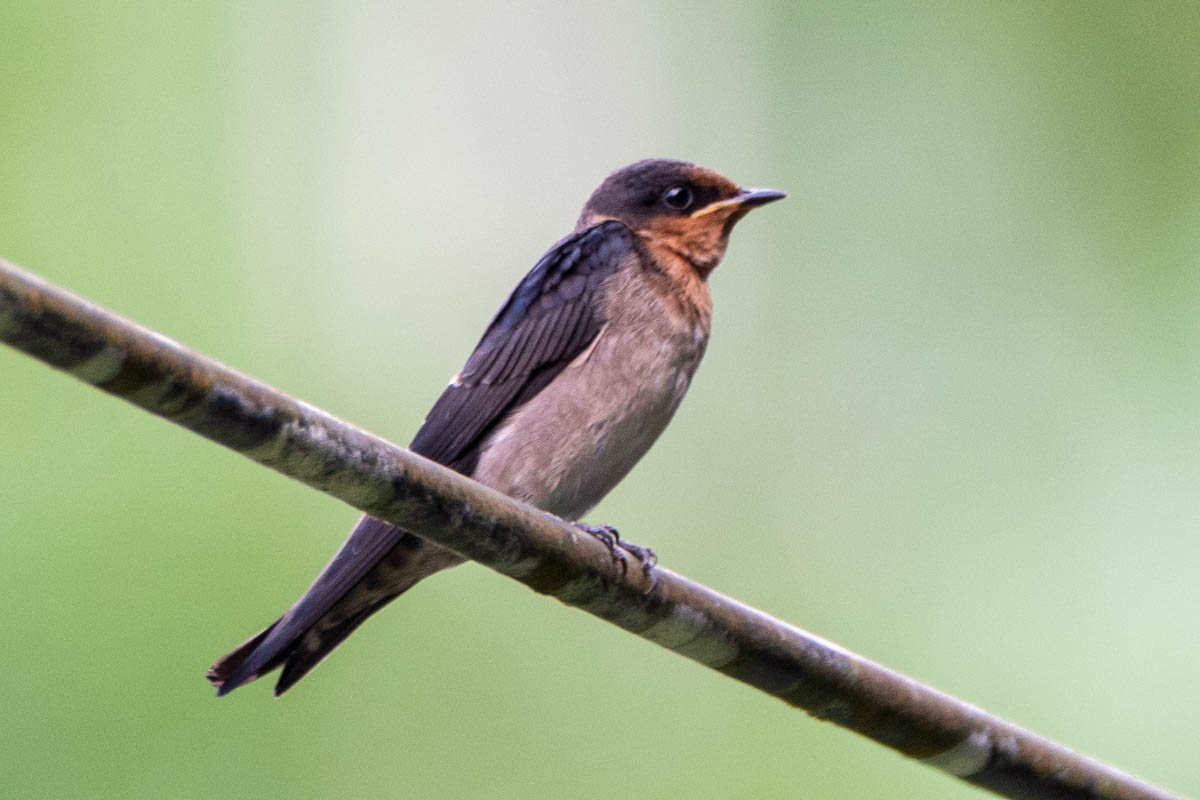
White-headed Munia
The White-headed Munia, a small but striking bird, stands out with its white head contrasting against a dark body. Often found in grassy areas and open fields, these social birds are typically seen in small flocks foraging for seeds and grains. Their cheerful chirping and communal behavior make them a charming addition to the island’s diverse birdlife.
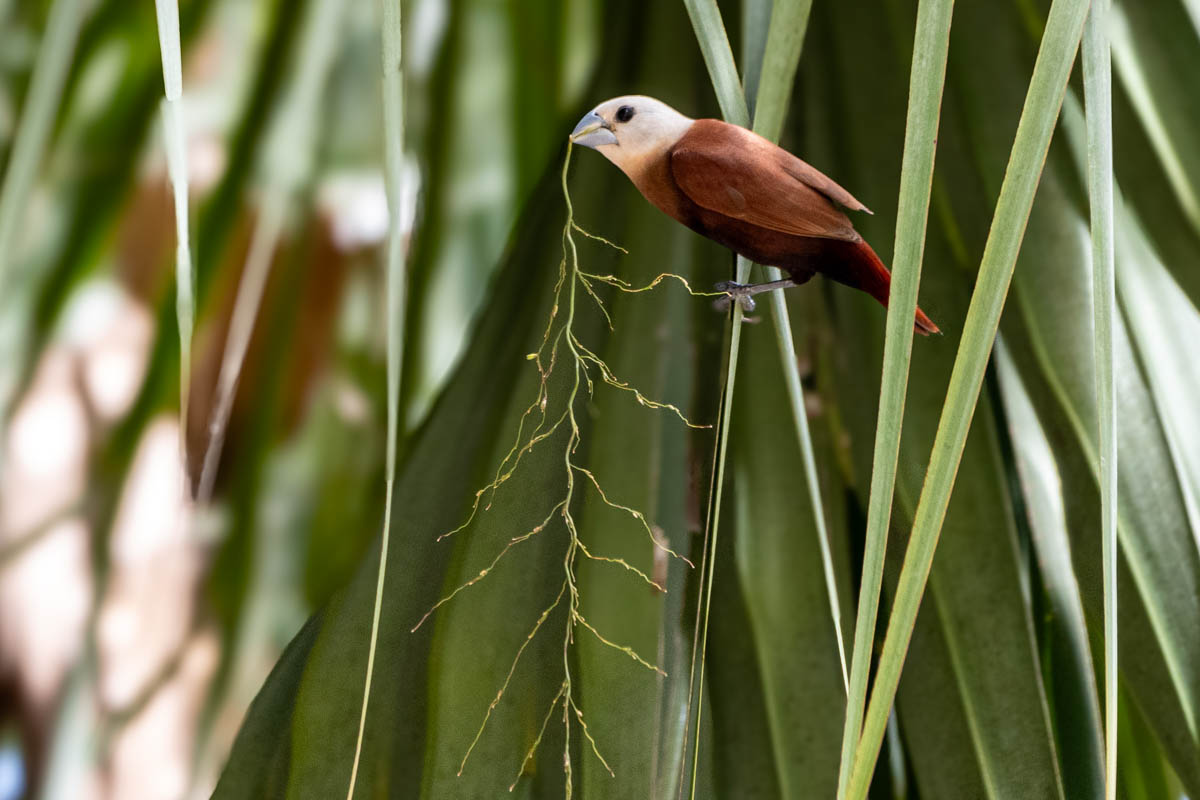
Common Myna
The Common Myna is a ubiquitous bird in Langkawi, easily recognizable by its brown plumage, yellow eye patch, and bright yellow legs. These adaptable birds thrive in urban areas, parks, and gardens, where they are often seen foraging on the ground or perched on rooftops and wires. Known for their vocalizations and mimicry skills, they add a lively touch to the island’s avian community.
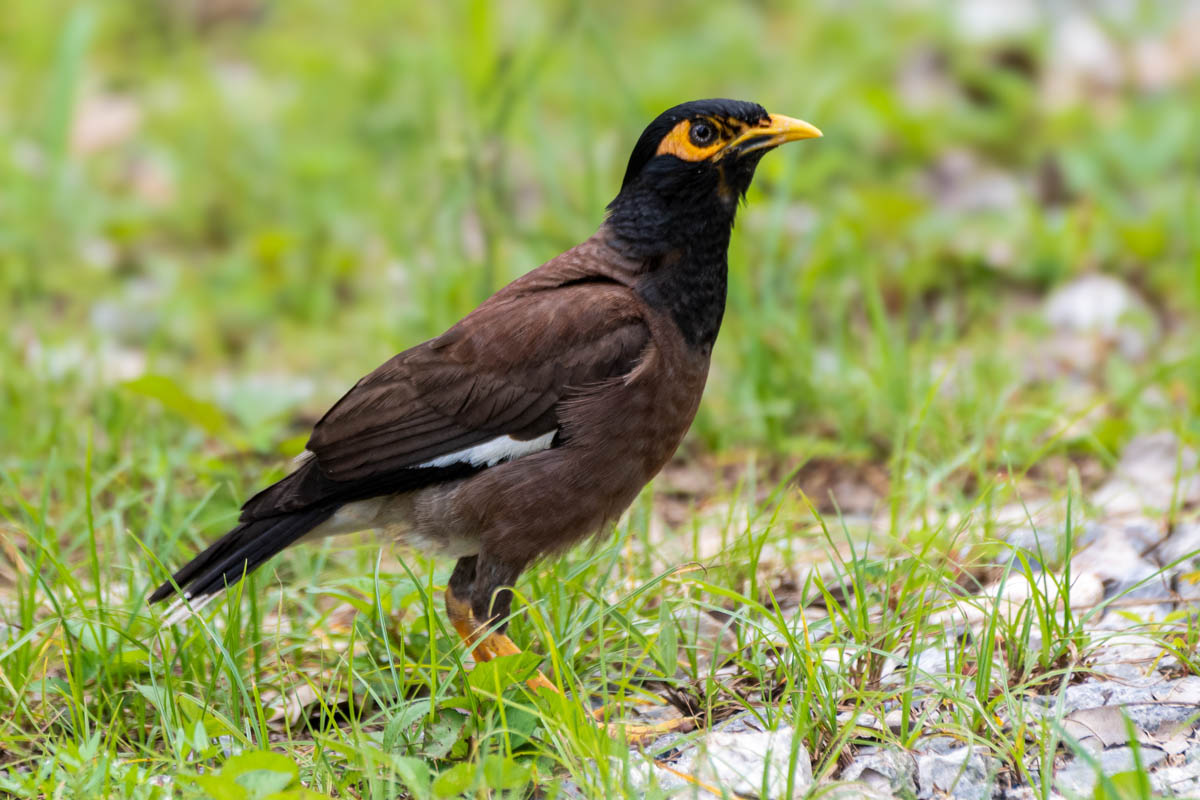
White-throated Kingfisher
The White-throated Kingfisher is characterized by its vibrant blue and chestnut plumage and distinctive white throat. Often seen perched on branches or wires near water bodies, these kingfishers are skilled hunters, diving swiftly to catch fish, crustaceans, and insects.
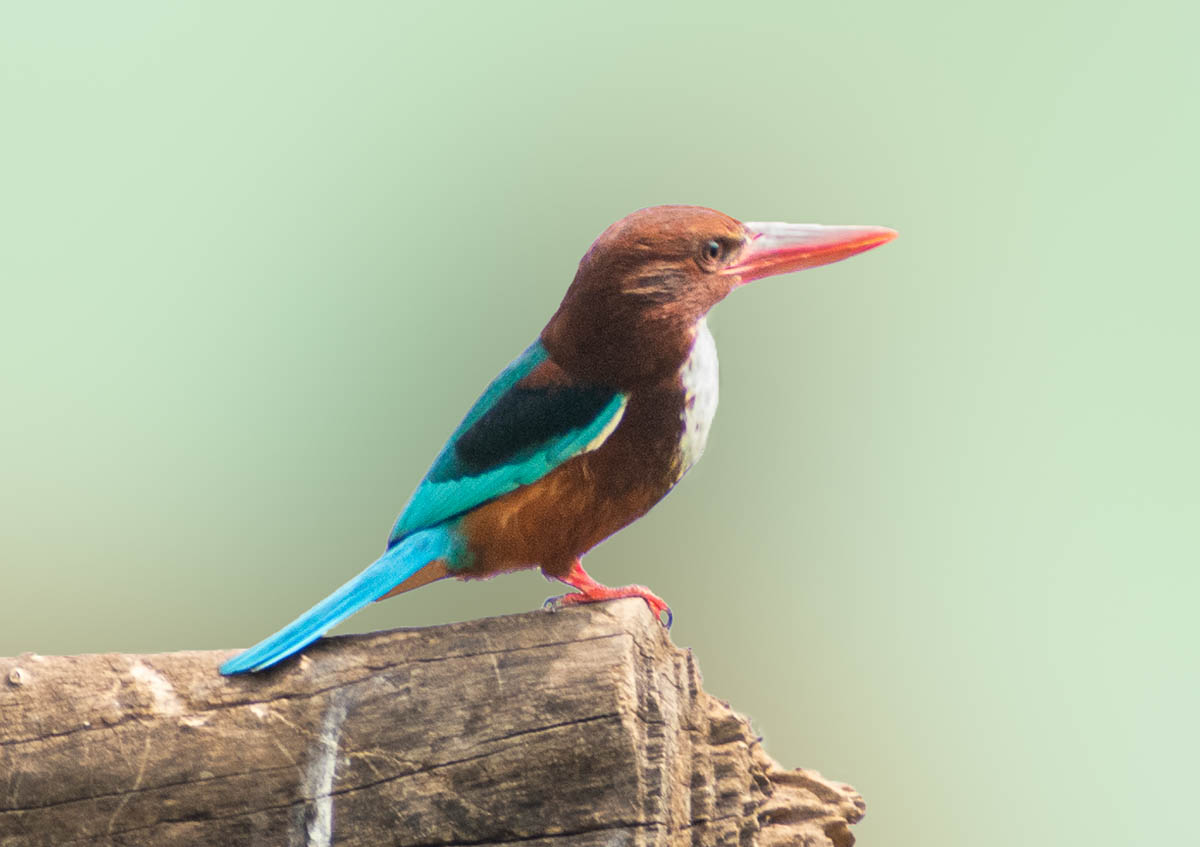
Black-naped Oriole
The Black-naped Oriole is a colorful bird frequently spotted in Langkawi, known for its striking yellow plumage and contrasting black markings on its head and wings. These orioles are skilled singers, their melodious calls often heard echoing through the island’s forests and gardens. They are adept at foraging for fruits, insects, and small prey.
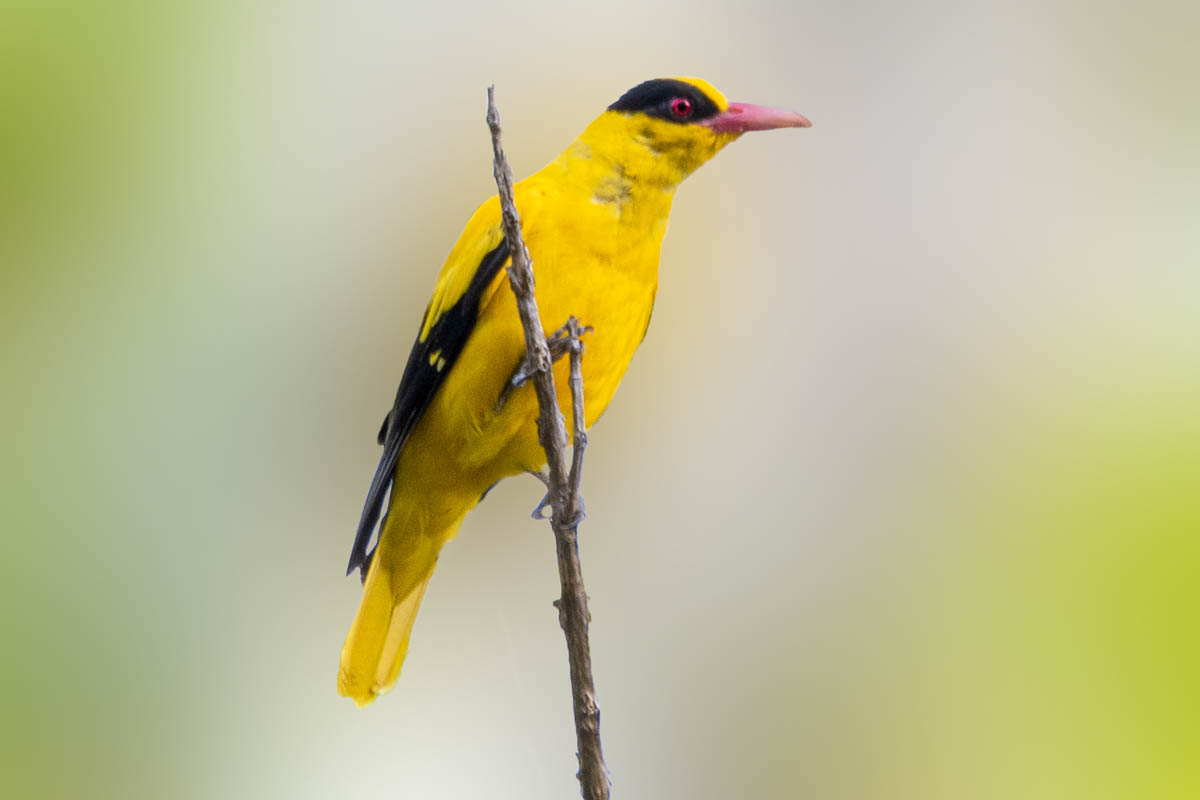
Pacific Reef Heron
The Pacific Reef Heron is commonly found along the shores and mangroves of Langkawi. Known for its distinct color morphs – white and dark – these herons are skilled hunters, stalking fish and crustaceans in shallow waters.
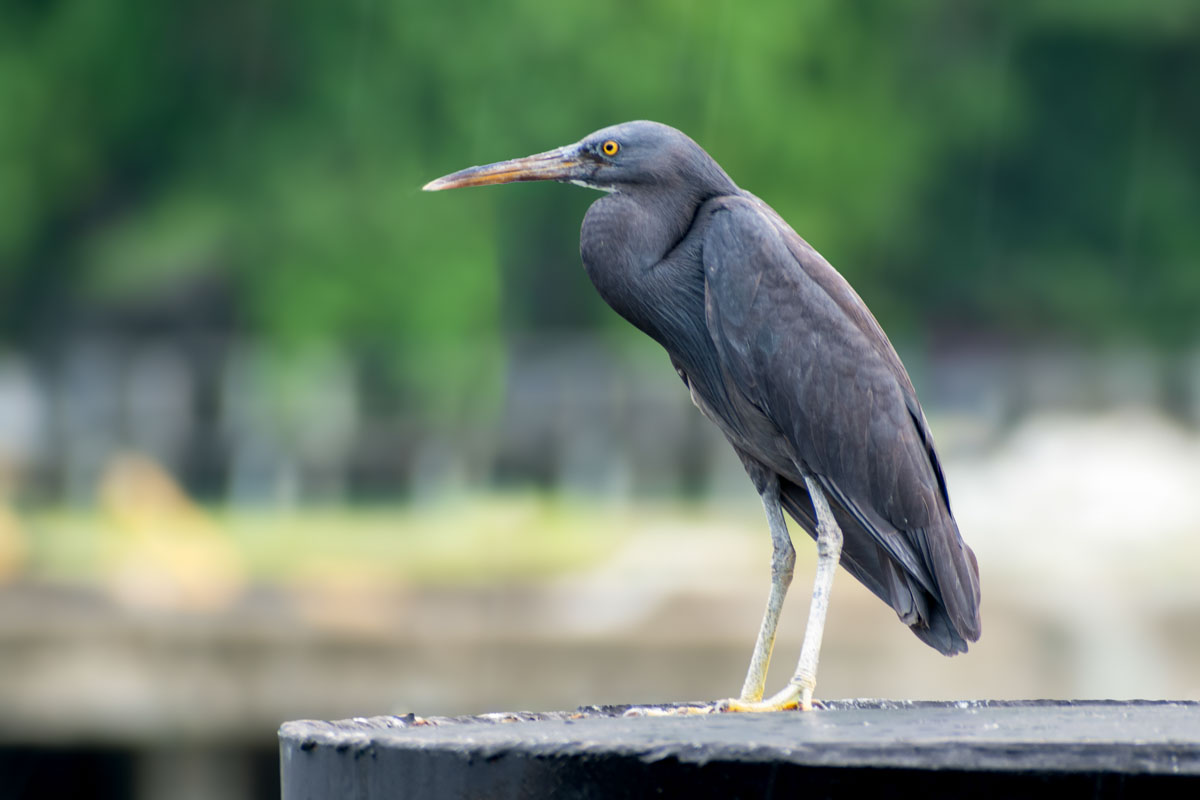
Best places for birdwatching in Langkawi
- Gunung Raya
- Pulau Tuba
- Legend Park, Kuah
- Kota Mahsuri
- Tanjung Rhu
- Datai Highland
- Langkawi SkyBridge
Water Buffalo
Water Buffaloes are abundant in Langkawi, forming a significant part of the island’s rural landscape. It’s practically impossible not to encounter them during your visit, as they are commonly found grazing in open fields and lush paddy fields across the island. These gentle giants usually roam in herds, making their presence felt.
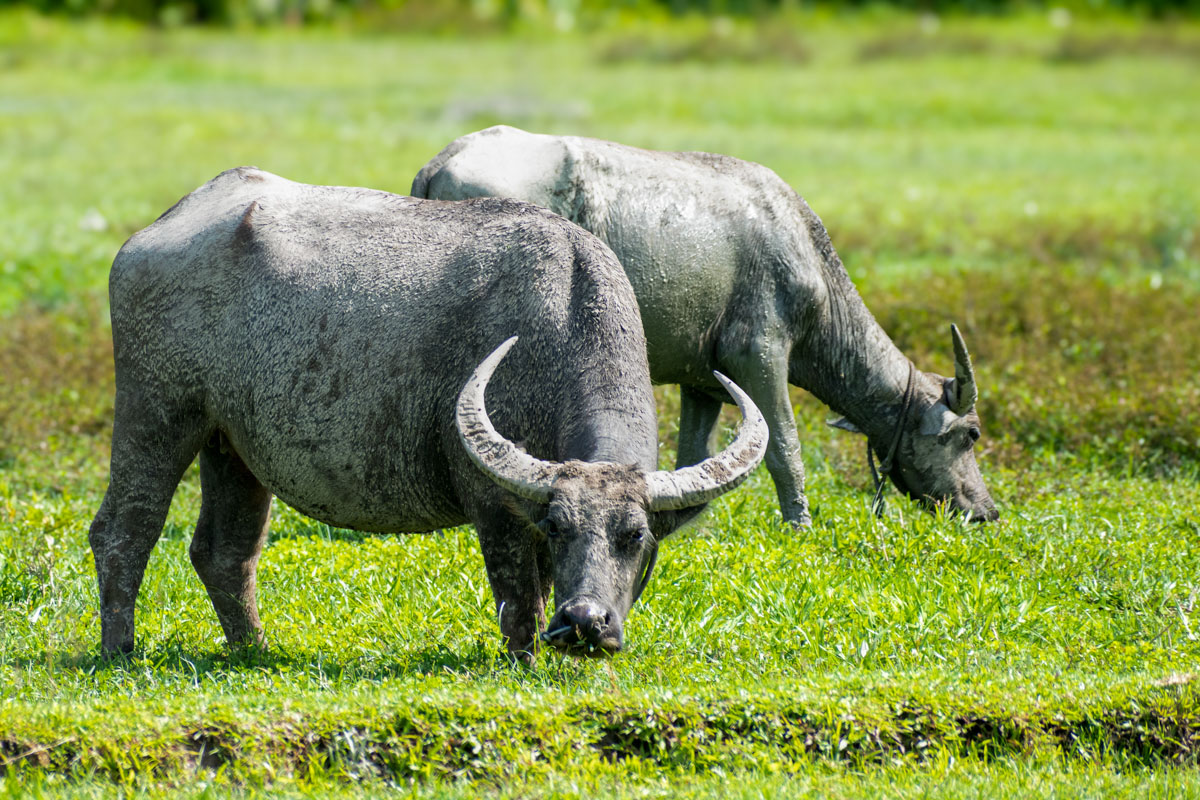
During my stay at Halcyon Days @ Langkawi, located in a quiet village surrounded by expansive paddy fields, I had the privilege of witnessing a large flock of water buffaloes daily, right from my room. Keep a distance from them as they may charge at you unnoticed.
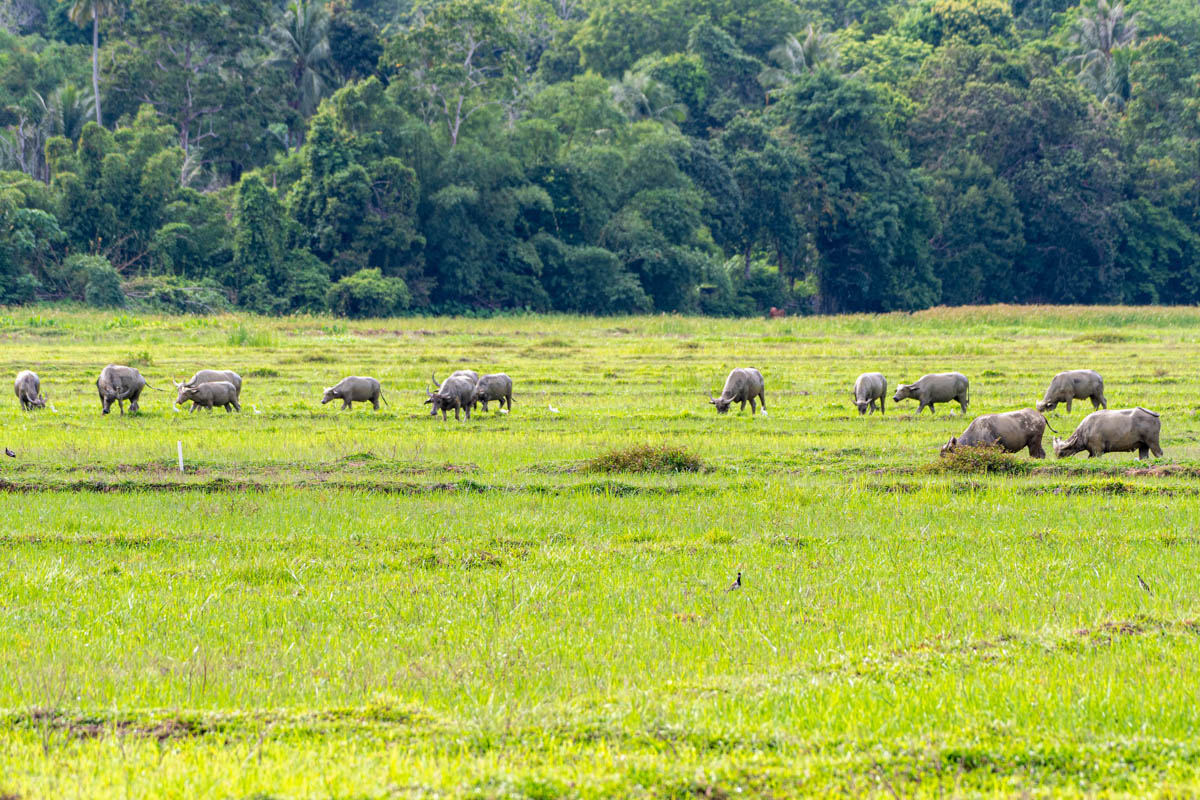
Get ready for a Langkawi wildlife adventure
Langkawi is a paradise for wildlife enthusiasts, offering countless opportunities to observe a diverse array of animals in their natural habitats. From the majestic hornbills soaring above the treetops to the playful antics of macaques and the elusive nocturnal creatures, Langkawi’s biodiversity is truly captivating. Whether you’re an avid photographer, a curious traveler, or simply someone who loves nature, this guide will help you make the most of your wildlife encounters. Pack your binoculars and camera, and get ready for an unforgettable adventure in the wilds of Langkawi.
Disclaimer:
This blog may contain affiliate links. At no extra cost to you, we may get a small commission if you buy anything. All products and services we endorse have been personally used or come highly recommended to us. These incomes allow us to keep the community supported and ad-free.





Can you share the guides or companies you used for the wildlife trips
I didn’t use any guide. I did everything on my own. I help plan the entire itinerary for Langkawi with a unique experience. Feel free to reach out.
I really enjoyed reading this wildlife story. So you have provided a detailed information about each speci that is really amazing and I am awe-struck. It seems you have travelled feel a special connection with wildlife. You have found a place to be – even if it’s for a while.
Thanks Anand